Remote Desktop stays a top target because exposed 3389, weak passwords, and noisy login telemetry make life easy for bots and low-skill actors. If you are asking how to prevent RDP brute force attacks, the short answer is to reduce exposure, raise authentication strength, and watch the logs like a hawk. Attackers scan, guess, and pivot faster each year, so your playbook needs concrete controls, not wishful thinking.
- Why Attackers Love Open RDP
- Key Signals Of Brute Force Activity
- The Core Toolkit For How To Prevent RDP Brute Force Attacks
- How To Prevent RDP Brute Force Attacks At A Glance
- Advanced RDP Brute Force Attack Prevention Methods
- Policy Baseline For How To Prevent RDP Brute Force Attacks
- Configuration Checklist For How To Prevent RDP Brute Force Attacks
- Operational Playbook: How To Stop A Brute Force Attack In Progress
- Hosted Option: Test Safely, Then Scale
- Wrap-up
- FAQ
Why Attackers Love Open RDP

Open RDP is attractive; it can be found by mass scans in minutes, it often runs with local admin rights, and one weak password can lead to ransomware. That is why any “How to prevent RDP brute force attacks” guide always starts with not exposing 3389 on the public internet, then adding layers, such as MFA and lockout rules, before anyone reaches the logon screen. If your team needs a refresher on what is RDP and how sessions work, start there so the next steps land clearly.
Also Read: Prevent brute force attacks in 5 steps
Key Signals Of Brute Force Activity
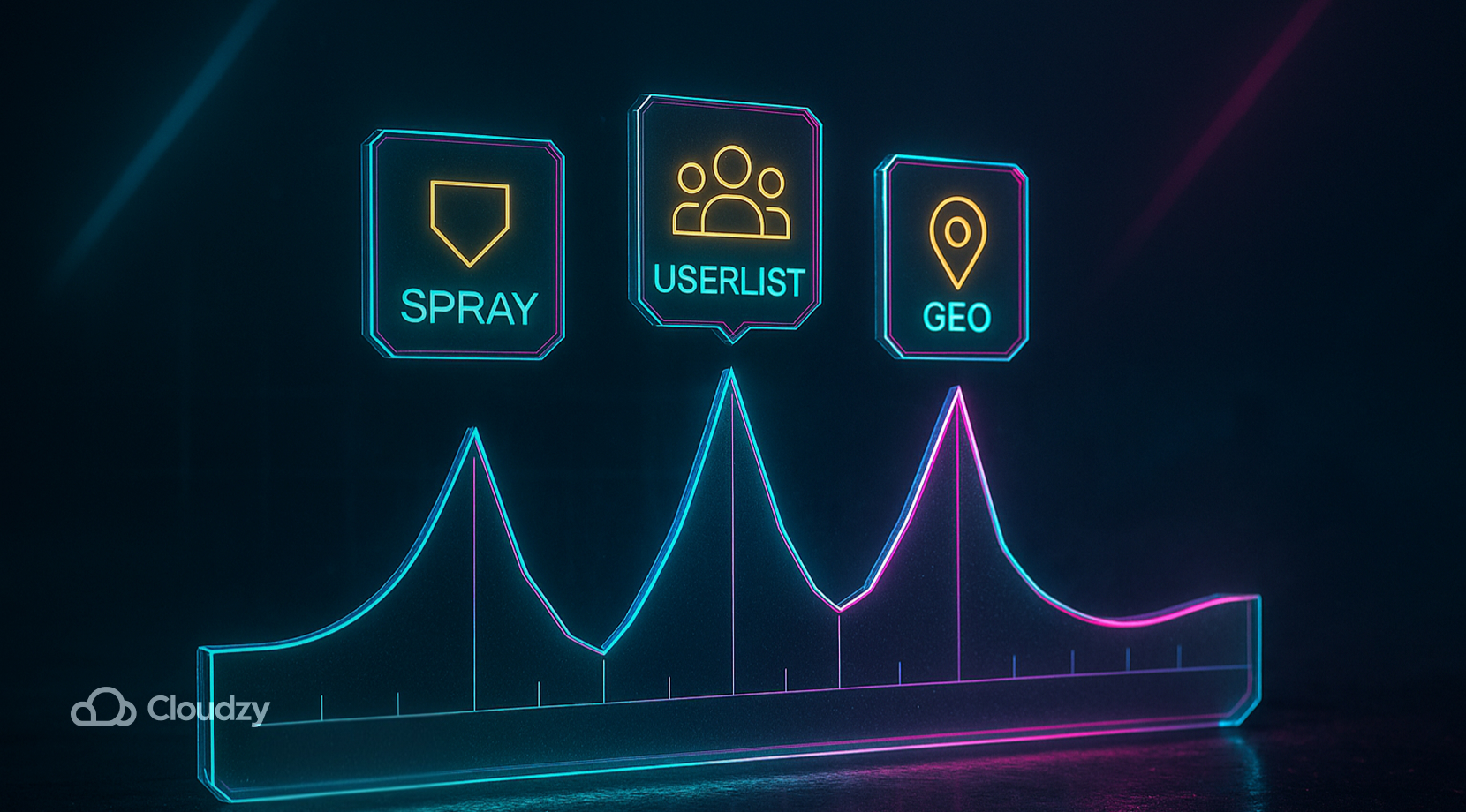
Before the controls, keep an eye on the basics. Sudden spikes in failed logons, repeated attempts across many usernames, and country-hopping IPs are the telltale signs. Modern EDR can also stitch session-level RDP data, so responders spot “spray and pray” sooner.
Smoothly moving from the “why,” the next section shows the controls that matter most.
 Need a Remote Desktop?
Need a Remote Desktop?
Reliable, high-performance RDP servers with 99.95 uptime. Take your desktop on the go to all the major cities in the US, Europe, and Asia.
Get an RDP ServerThe Core Toolkit For How To Prevent RDP Brute Force Attacks
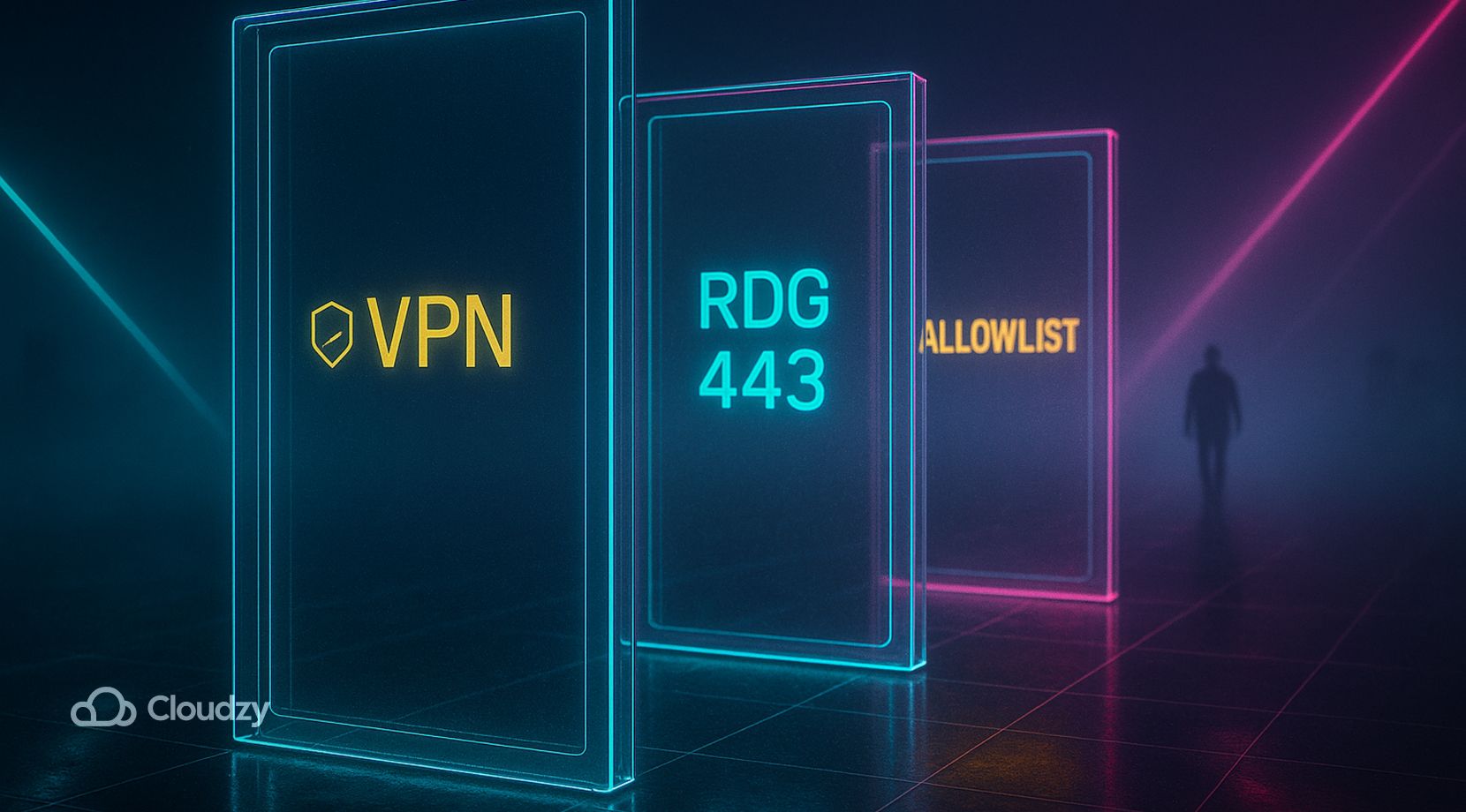
The fastest gains come from network exposure cuts, stronger sign-in gates, and built-in Windows policies. This is where how to prevent brute force attacks turns into practice. For teams asking how to prevent brute force attacks across other remote tools, the same layered playbook applies here as well.
- Shut the open door first: Remove public 3389 with VPN or RD Gateway. A short allowlist for known IPs plus TLS on a gateway beats raw port-forwarding every time. This single move slashes noise and lowers password-guessing volume dramatically.
- Turn on MFA for RDP: Push-spam resistant MFA, such as app prompts with number matching or hardware keys, blocks most password-only intrusions. Add MFA at the gateway or via an RDP provider with tight directory integration.
- Require Network Level Authentication (NLA). NLA forces authentication before a full desktop loads, cutting resource drain from failed sessions and reducing attack surface. Pair NLA with TLS.
- Apply account lockout policies. Set sensible thresholds and lockout windows so bots cannot guess forever. This is classic brute-force defense, and it still works.
- Use allowlists and geo-fencing. Limit who can even knock on the door. Country blocks, ASN blocks, and short static allowlists reduce traffic to almost zero in many small office setups.
- Harden passwords and rotation. Use long passphrases, unique secrets per admin, and a manager. This is basic RDP brute force protection, yet too many breaches still start here.
- Update Windows and RDP stack promptly. Patch known RDP flaws and roll updates across servers and clients. Old vulnerabilities still show up in the wild.
- Collect and alert on failed logins. Forward Windows Security logs, watch Event IDs 4625/4624, and alert on abnormal volumes, source geographies, and service account hits. How to prevent RDP brute force attacks always includes eyes on logs.
Each of these reduces risk on its own; together they form RDP brute force attack prevention methods that hold up under real pressure. Next is a quick reference map you can share with your team.
Also Read: PCoIP vs RDP: Which one is better for Remote Desktop connection?
How To Prevent RDP Brute Force Attacks At A Glance
Use this quick matrix to check coverage before a change window. It ties each control to why it blocks guessing attempts and exactly where to switch it on, so teams working on how to prevent RDP brute force attacks can review and assign fixes in one pass.
| Control | Why it helps | Where to set it |
| VPN / RD Gateway | Removes public 3389, adds TLS and policy gates | Perimeter firewall or RD Gateway (port 443) |
| MFA | Stops password-only logins | Gateway, identity provider, or RDP add-on |
| NLA + TLS | Auth before session; less brute-force load | System Properties → Remote → “Allow connections only from computers running NLA” |
| Account lockout | Cuts infinite guessing | secpol.msc → Account Policies → Account Lockout Policy |
| IP allowlist / geo-fence | Limits who can attempt | Firewall rules; vendor IPS/Geo policies |
| Patch RDP | Removes known CVEs | Windows Update / WSUS / Intune baselines |
| Centralized logging | Faster detection and response | SIEM/EDR collection; alert on 4625 spikes |
This map covers the “what.” The next H2 drills into RDP brute force attack prevention methods that go beyond the basics.
Read More: Top RDP Provider 2022
Advanced RDP Brute Force Attack Prevention Methods
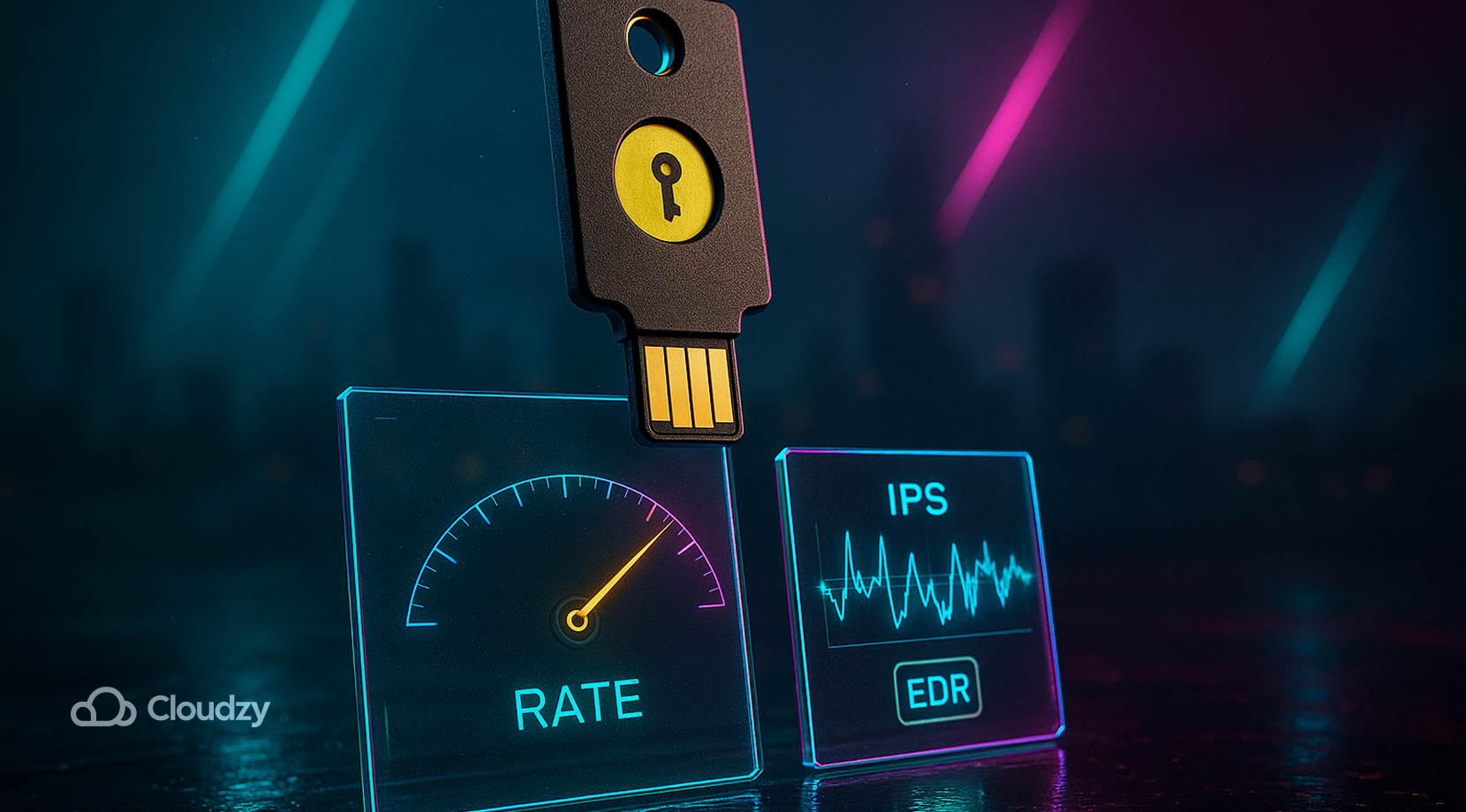
A few extra steps pay off, especially for internet-facing workloads and admins on the go.
Rate Limiting on Gateways and IPS Rules
Set per-IP thresholds on your RD Gateway or firewall, and tune IPS signatures that match RDP failed-handshake floods. This keeps bots from hammering you at machine speed and gives SOC alerts more context.
Session-Aware EDR and RDP Telemetry
Modern EDR adds session metadata, helps distinguish admin work from staged attacks, and supports hunting across related hosts. That context shortens dwell time.
Disable Risky Redirections and Tighten Policies
Turn off unnecessary drive, clipboard, and printer redirection on high-risk hosts. Disabling convenience features raises friction for intruders. Pair with least-privilege and local admin separation. Stopping brute-force attempts is easier when lateral movement slows.
Obfuscation, Used Sparingly
Changing the default port does not stop a determined scan; it only trims noise from bots that hit 3389 by default. If you change it, still pair with VPN, allowlists, and MFA.
Operational Hygiene and Guided Admin Tasks
On fresh Windows servers, confirm Remote Desktop settings, NLA, and firewall rules from an elevated terminal. Tasks like enabling RDP via CMD stay clean and reproducible when scripted and reviewed. Tie these steps to your change process so drift is caught early.
Avoid Weak Consumer Tools for Admin Work
RDP hygiene is part of a wider remote-access story. If you manage systems over browsers or third-party apps, audit those too, since chrome remote desktop security risks can be just as noisy in your logs as exposed 3389. Good hygiene across tools keeps RDP brute force protection strong across the board.
Also Read: [Fixed] RDP an Internal Error has occurred?
Policy Baseline For How To Prevent RDP Brute Force Attacks
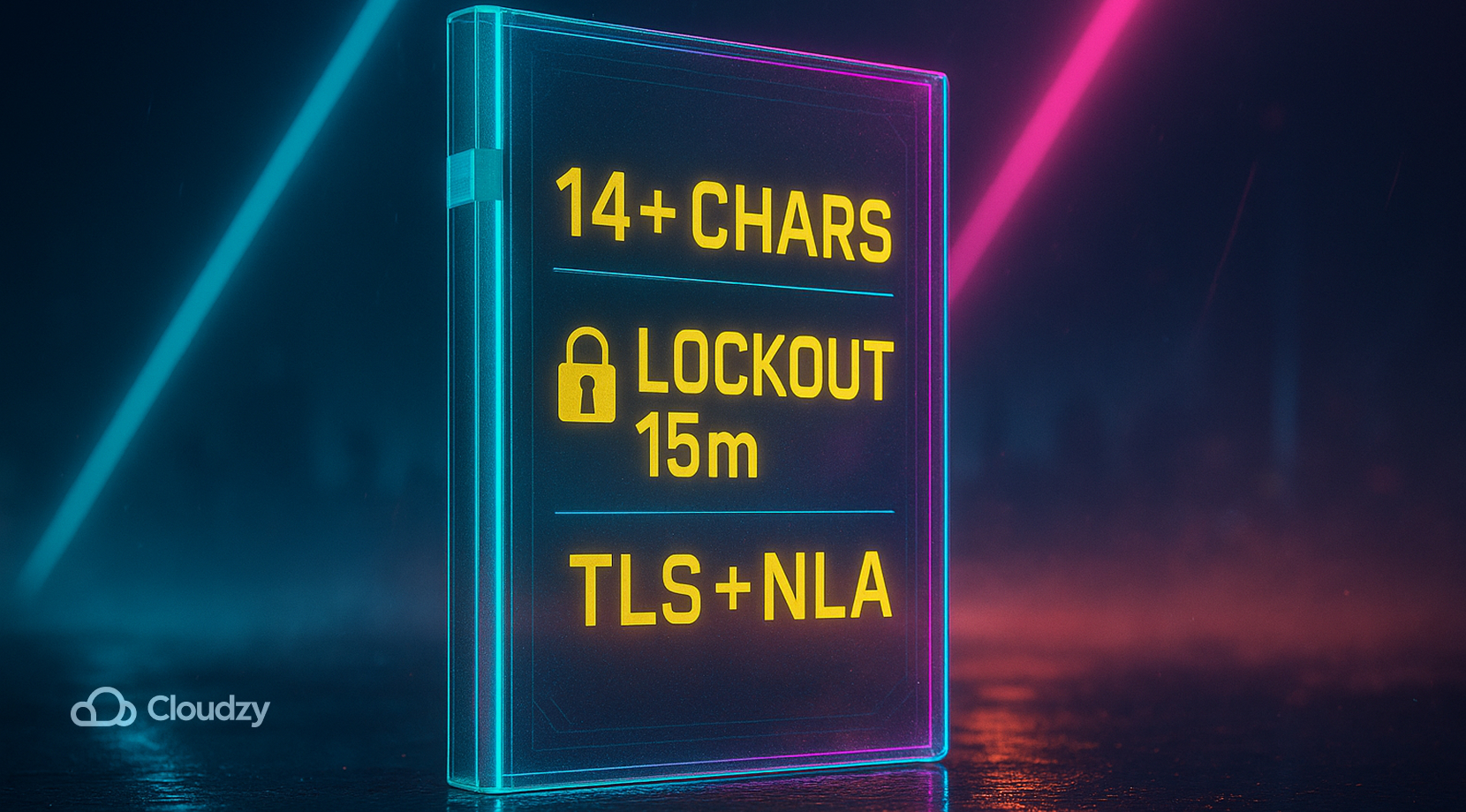
Teams work faster when settings are written down. Use this shared baseline so admins do not guess the next time they stand up a host. The goal is simple: make how to prevent RDP brute force attacks repeatable across sites and shifts.
- Account Lockout Threshold: 5-10 invalid attempts; Lockout Duration: 15-30 minutes; Reset Counter: 15 minutes.
- Password Policy: 14+ characters minimum with passphrases; unique per admin; protect secrets in a manager.
- NLA and TLS: Required on all servers; reject legacy encryption; audit for drift monthly.
- RD Gateway or VPN: Mandatory for remote admin; block direct public 3389 even for testing.
- Logging: Forward 4625/4624 to SIEM; alert on privileged account failures and geographies you never use.
- Least privilege: Separate local admin accounts; avoid domain admins for daily tasks; review membership quarterly.
Use this baseline as a living document; that is how to prevent RDP brute force attacks at scale without constant rework.
Also Read: Open Task Manager in Remote Desktop
Configuration Checklist For How To Prevent RDP Brute Force Attacks
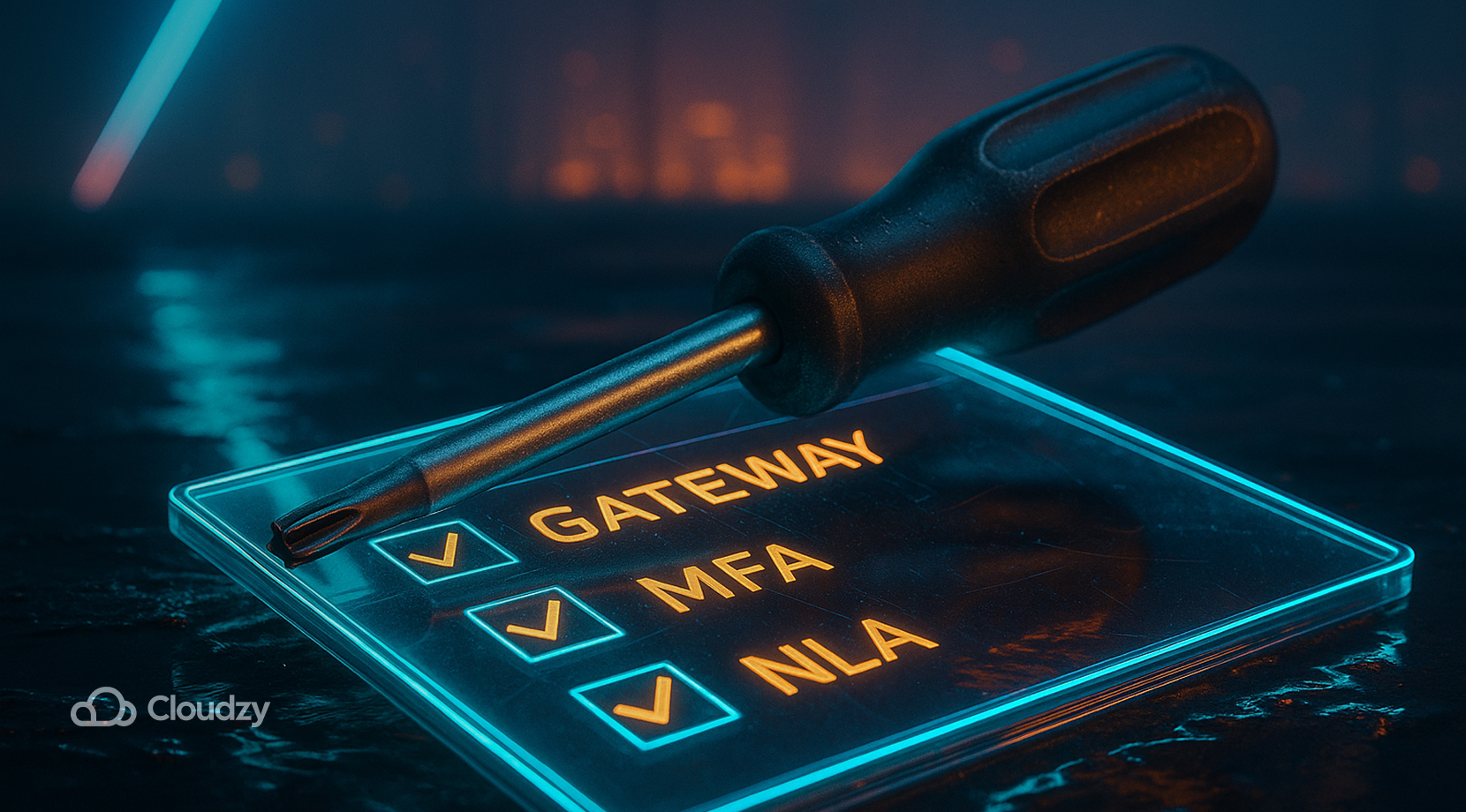
A checklist helps during on-call. Keep this version close to your change window notes so reviews stay short and focused.
- Test reachability through the gateway, not through a direct NAT rule.
- Verify MFA on the path you actually use today, not a legacy flow.
- Confirm NLA is on, and that TLS ciphers match your standard.
- Confirm lockout settings on the target OU and check for GPO conflicts.
- Disable unneeded device redirections on sensitive hosts.
- Confirm logs are forwarding and that your failed-login alert still fires.
- Document IP allowlists and renew them when staff or vendors change.
Once the checklist passes, you stop the easy attacks and make the rest expensive. That is still the best answer to How to prevent RDP brute force attacks in day-to-day work.
Operational Playbook: How To Stop A Brute Force Attack In Progress

If monitoring fires an alert for repeated failed logons or credential sprays, work the steps in order.
- Contain the source. Block the IP or range at the perimeter. If the volume is high, apply temporary rate limits.
- Stabilize identity. Expire the targeted account’s password and check for reuse on other services; disable the account if compromise is suspected.
- Validate access paths. Confirm RD Gateway or VPN is required for access; remove any rogue port-forwarding that re-exposes 3389.
- Hunt for side effects. Review RDP session logs, new local admins, service installs, and scheduled tasks. EDR telemetry helps catch persistence moves.
- Tune detections. Add a rule for failed-logon storms on privileged accounts, and trigger ticketing for follow-up so lessons become defaults.
These actions keep incidents short, which is the practical side of how to prevent RDP brute force attacks once the noise starts.
Hosted Option: Test Safely, Then Scale

If you need a clean lab or a small production foothold, you can buy an RDP from Cloudzy’s various plans and run on fast hosts with 10 Gbps connectivity, NVMe storage for quick I/O, and 99.95% uptime backed by real monitoring. You can pick data centers across North America, Europe, and Asia so latency stays low for your team; pay with credit card, PayPal, Alipay, or even crypto; and keep costs affordable.
 Need a Remote Desktop?
Need a Remote Desktop?
Reliable, high-performance RDP servers with 99.95 uptime. Take your desktop on the go to all the major cities in the US, Europe, and Asia.
Get an RDP ServerWrap-up
Now you have a clear, layered approach on how to prevent RDP brute force attacks. Keep exposure low with a VPN or gateway, raise the bar with MFA, NLA, and lockout policies, and watch authentication logs closely. Carry these same ideas to other remote tools, and you’ll know how to prevent brute force attacks in a practical, predictable, and repeatable manner. These steps also work cleanly if you want to know how to prevent brute force attacks across other admin surfaces.
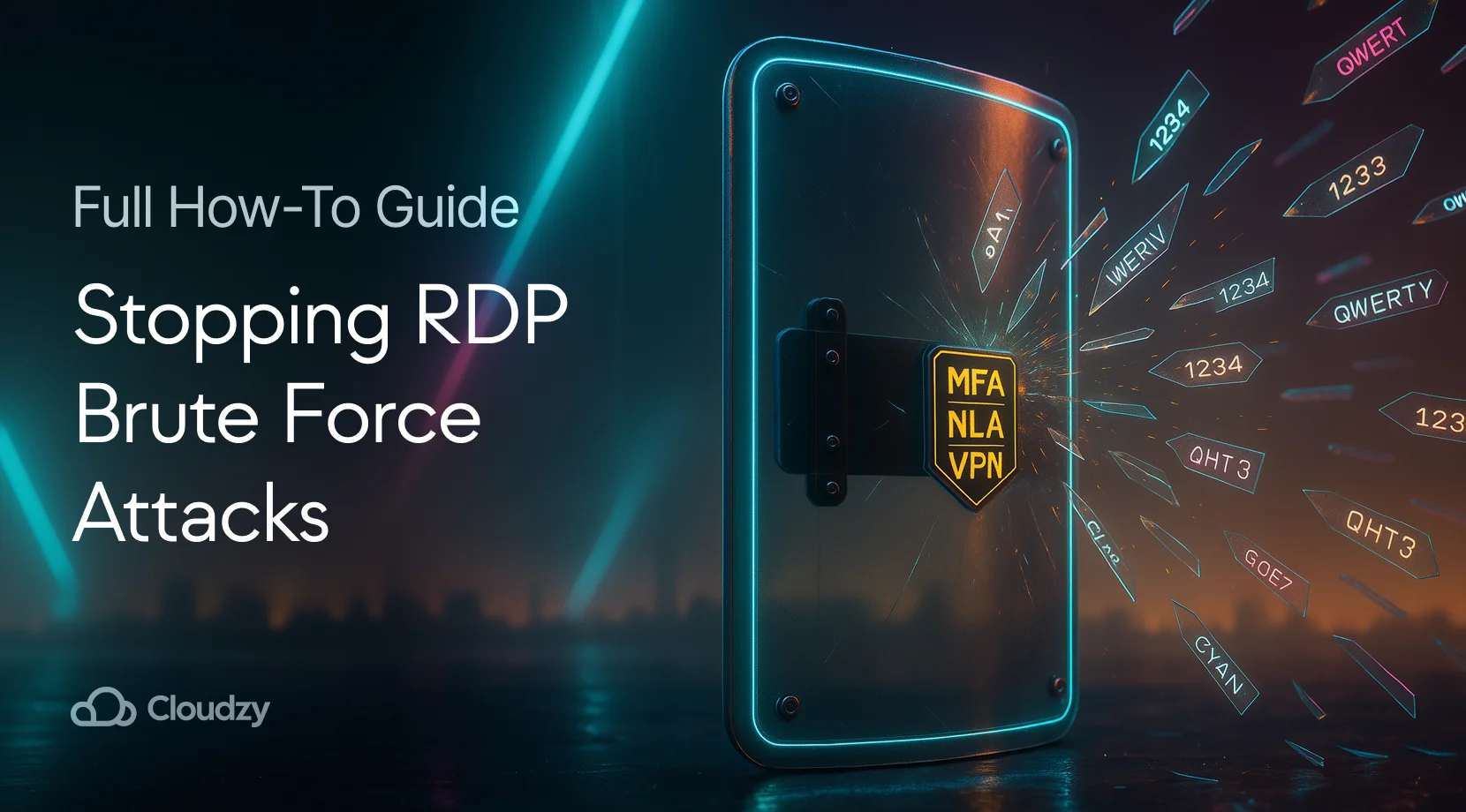


5 Responses
Usually choosing a strong and complex password does the job
If you use a secure RDP connection and do all the things in this article you should be good to go
Is using RDP on a VPS more secure than a local system RDP connection
How much does using a reliable VPS provider affect on my security? Or it does not have anything to do with the provider?
Thanks for the great article, I found what I was looking for